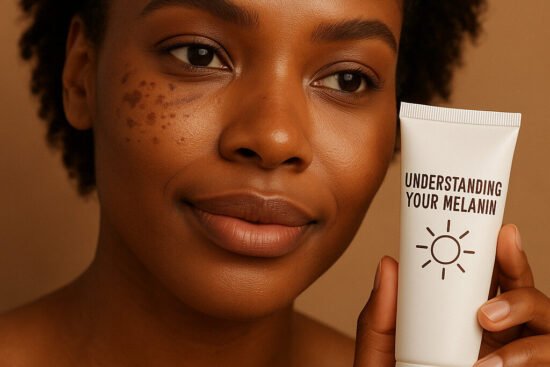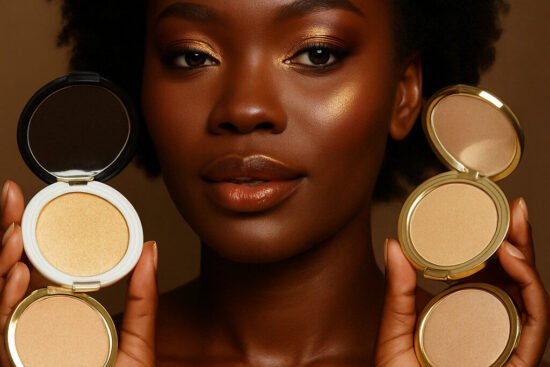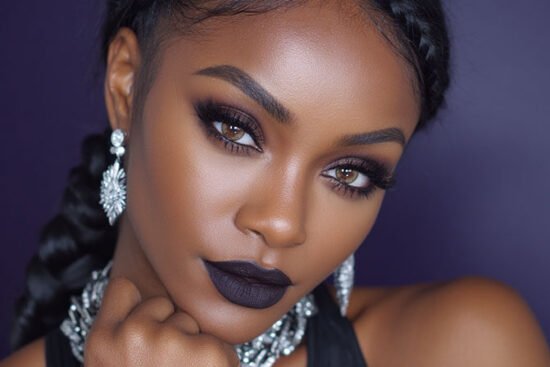
Hey there! Have you ever wondered just how often black women get their hair done? Well, let’s take a closer look at this fascinating topic. From the outside, natural hair for black women may seem like a lot to handle, but it’s actually a beautifully diverse and versatile journey. In this article, we’ll explore the different factors that influence how often black women get their hair done and how embracing their natural hair has become a celebration of self-expression and empowerment. So, get ready to discover the secrets behind the stunning hairstyles of black women!
Understanding Black Hair
Unique characteristics of black hair
Black hair is known for its unique characteristics that set it apart from other hair types. It typically has a tightly coiled or kinky texture, which can range from fine to coarse. Black hair also tends to have a lower sebum production, making it prone to dryness. Additionally, the strands of black hair are thicker in diameter compared to other hair types, which contributes to its strength but also makes it more susceptible to breakage if not properly cared for. Understanding these characteristics is essential in maintaining healthy black hair.
Common types of black women’s hairstyles
Black women have a diverse range of hairstyles that they can choose from. From natural styles to chemically treated hair, the options are vast. Some popular hairstyles include afros, braids, twists, cornrows, locs, and bantu knots, among others. These hairstyles can be worn for various occasions and can be tailored to suit individual preferences and personal style. The versatility of black women’s hairstyles allows for self-expression and creativity.
Maintenance requirements and hair care practices typical of black hair
Maintaining black hair requires specific hair care practices to keep it healthy and vibrant. Regular deep conditioning is essential to moisturize and nourish the hair, as black hair tends to be drier. Protective styling is also crucial as it helps minimize manipulation and breakage. This includes wearing braids, weaves, wigs, or using silk or satin caps or pillowcases to protect the hair while sleeping. Additionally, black hair benefits from regular trims to prevent split ends and promote overall hair health.
The Natural Hair Movement
The significance and history of the natural hair movement among black women
The natural hair movement has gained significant momentum in recent years and holds great significance for black women. It celebrates and embraces the beauty of natural black hair and encourages women to embrace their unique textures. The movement challenges societal beauty standards that have often favored Eurocentric hair types and promotes self-acceptance and self-love. The history of the natural hair movement can be traced back to the 1960s and 1970s when the Black Power Movement and the Civil Rights Movement influenced a cultural shift in embracing natural hair.
Impact of the natural hair movement on black women’s hair care routines
The natural hair movement has had a profound impact on black women’s hair care routines. Many women have transitioned from chemically treated hair to embracing their natural textures. This shift has led to the development of specialized hair care products catering to natural hair needs, such as sulfate-free shampoos and moisturizing leave-in conditioners. The movement has also encouraged a greater emphasis on embracing one’s natural beauty, promoting self-confidence, and fostering a sense of community among black women.
Frequency of Hair Care: An Overview
Factors influencing how often black women get their hair done
Several factors influence how often black women get their hair done. These include individual hair needs, lifestyle, hair type, and personal preferences. Some women choose to visit a hairstylist regularly for professional services, while others may opt for at-home care. Job requirements, social commitments, and financial considerations also play a role in determining the frequency of hair care appointments.
Typical frequency of haircut appointments
Haircut appointments for black women can vary depending on the desired style and maintenance needs. Generally, a trim every 6-8 weeks is recommended to remove split ends and maintain overall hair health. However, this frequency can be adjusted based on individual hair growth and length retention goals.
Regular at-home hair care practices
In addition to salon visits, regular at-home hair care practices are crucial for maintaining healthy hair. These include washing and conditioning the hair using products suitable for black hair. Conditioning should be done after every wash to restore moisture and prevent dryness. Detangling the hair gently using wide-toothed combs or fingers and protecting the hair at night with silk or satin scarves or bonnets are also important practices.
Hair Care for Natural Hair
How often should natural hair be washed and conditioned
The frequency of washing natural hair can vary depending on individual preference and hair type. Some women choose to wash their hair once a week, while others may wash every two weeks or even less frequently. By observing the hair’s needs and ensuring that the scalp remains clean and healthy, one can determine the optimal frequency for washing and conditioning natural hair.
The importance of deep conditioning
Deep conditioning is a vital step in maintaining the health and moisture balance of natural hair. It helps to replenish lost moisture, strengthen the hair strands, and improve overall manageability. Deep conditioning should be done regularly, ideally once a week or every two weeks, to ensure that natural hair remains healthy, hydrated, and resilient.
Common protective styles for natural hair
Protective styling is crucial for preserving the health and length of natural hair. Some popular protective styles include braids, twists, buns, updos, and wigs. These styles help to minimize manipulation, reduce daily stress on the hair, and protect the ends from damage. By incorporating protective styles into their routine, black women can maintain the integrity of their natural hair while enjoying a variety of stylish looks.
Hair Care for Chemically Treated Hair
Maintenance requirements for relaxers and perms
Chemically treated hair, such as hair that has been relaxed or permed, requires specific maintenance to keep it healthy. It is essential to follow a proper aftercare routine, including regular moisturizing and conditioning, to prevent excessive damage and breakage. Avoiding harsh chemical treatments, excessive heat, and regularly trimming split ends are important steps in maintaining chemically treated hair.
Frequency of relaxer touch-ups
The frequency of relaxer touch-ups can vary depending on the rate of hair growth and personal preference. On average, touch-ups are recommended every 8-12 weeks to maintain consistent results. It is crucial not to overlap relaxers during touch-ups to prevent overprocessing and damage to the hair.
How often should chemically treated hair be washed
Washing chemically treated hair should be done carefully to avoid stripping away moisture or loosening the curl pattern. It is generally recommended to wash chemically treated hair once a week or every two weeks using sulfate-free shampoos and moisturizing conditioners. This helps to maintain the integrity of the hair while keeping it clean and hydrated.
Hair Care for Hair Extensions, Wigs, and Weaves
Frequency of hair weave or extension maintenance
The frequency of maintenance for hair weaves or extensions can vary depending on the specific style and individual preference. Some may choose to visit a stylist for adjustments every 4-6 weeks, while others may prefer longer intervals. It is essential to balance the need for maintenance with the hair’s health and minimizing potential damage.
How long can wigs and weaves be worn before needing replacement
The lifespan of wigs and weaves can vary depending on the quality of the hair, the care given, and the level of wear. Generally, good-quality wigs and weaves can last anywhere from several months to a year or more with proper care. However, it is important to monitor the hair’s condition, including any signs of shedding, tangling, or excessive dryness, to determine when a replacement may be necessary.
Hair care practices for weave and wig wearers
Maintaining the health of the natural hair under weaves or wigs is crucial. This includes regular cleansing and conditioning of the scalp, moisturizing the hair, and ensuring proper ventilation to prevent buildup and potential damage. Additionally, gentle handling and using heat protectants when styling the hair help maintain its integrity while wearing weaves or wigs.
Designing a Hair Care Routine
Key factors to consider when scheduling hair appointments
When designing a hair care routine, several key factors should be considered. These include personal hair goals, budget, hair type, desired styles, and lifestyle. Assessing these factors can help determine the frequency of salon visits, the types of services needed, and the balance between professional hair care and at-home maintenance.
Balancing professional hair services with at-home care
Maintaining a balance between professional hair services and at-home care is essential for the overall health and appearance of black hair. While professionals can provide expert services and treatments, the daily at-home care plays a significant role in the hair’s day-to-day maintenance. Regular cleansing, conditioning, and protective styling at home help to supplement and maintain the benefits of professional care.
Adjusting hair care routines to suit lifestyle and specific hair needs
Flexibility in adjusting hair care routines is important to accommodate individual lifestyles and specific hair needs. For example, someone with an active lifestyle may opt for low-maintenance styles and products, while those with specific hair concerns may focus on targeted treatments. It is essential to customize the hair care routine to ensure it aligns with personal preferences, availability, and specific goals.
Importance of a Professional Hair Stylist
Role of professional hair stylists in black hair care
Professional hair stylists play a crucial role in black hair care. They have specialized expertise in dealing with various hair types, textures, and styles. Professional stylists can provide expert advice, personalized consultations, and recommend suitable products and treatments tailored to individual hair needs. Their knowledge and skills contribute to maintaining the health and vitality of black hair.
How often should black women see their hairstylists
The frequency of salon visits for black women can vary depending on individual needs and preferences. For some, quarterly visits may be sufficient, while others may choose to visit a stylist more regularly, such as every 4-8 weeks, for trims, treatments, or styling. Establishing a regular relationship with a trusted stylist can help guide individual hair care journeys and address specific concerns.
Choosing the right hair professional
Choosing the right hair professional is crucial to ensure the best care for black hair. Factors to consider include their experience and expertise with black hair, recommendations from others, and their understanding and respect for individual hair goals and preferences. Schedule consultations with different professionals, ask questions, and evaluate their knowledge and compatibility with your needs before making a decision.
At-Home Hair Care Practices
The role of at-home care in the overall hair health
At-home care plays a vital role in maintaining the overall health and well-being of black hair. Daily care routines, such as cleansing, conditioning, moisturizing, and protective styling, help to nourish and protect the hair, ensuring it remains strong, resilient, and vibrant. Investing time and effort into proper at-home care can yield significant improvements in the hair’s appearance and texture.
Essential at-home hair care practices for black women
Some essential at-home hair care practices for black women include regular cleansing with sulfate-free shampoos, deep conditioning for moisture retention, and gentle detangling using wide-toothed combs or fingers. Protecting the hair at night with satin or silk pillowcases or bonnets helps to minimize breakage. Additionally, avoiding excessive heat and using heat protectants when styling can help preserve the hair’s health and integrity.
DIY hair treatments: How often and why
DIY hair treatments can be a beneficial addition to an at-home care routine. The frequency of these treatments may vary depending on individual hair needs and specific goals. Some common DIY treatments include protein treatments, hot oil treatments, and homemade hair masks using natural ingredients. These treatments can help restore moisture, improve elasticity, and address specific hair concerns, such as breakage or dryness.
Myths around Black Women’s Hair Care
Addressing common misconceptions about black hair care
Black hair care is often surrounded by misconceptions and stereotypes. It is crucial to address and debunk these misconceptions to promote accurate and inclusive information. Some common misconceptions include the idea that black hair is always strong and does not require regular maintenance or that all black women wear wigs or weaves. By dispelling these myths, black women can make informed decisions about their hair care practices.
Debunking myths about the frequency of hair washing and styling for black women
Another prevalent myth is that black women should avoid washing their hair frequently or that frequent styling is damaging. In reality, the frequency of hair washing and styling varies based on individual hair needs and preferences. Washing the hair regularly, using suitable products, and employing proper styling techniques can contribute to maintaining healthy and beautiful black hair. It is important to dispel these myths and encourage self-care practices that work for each individual.











